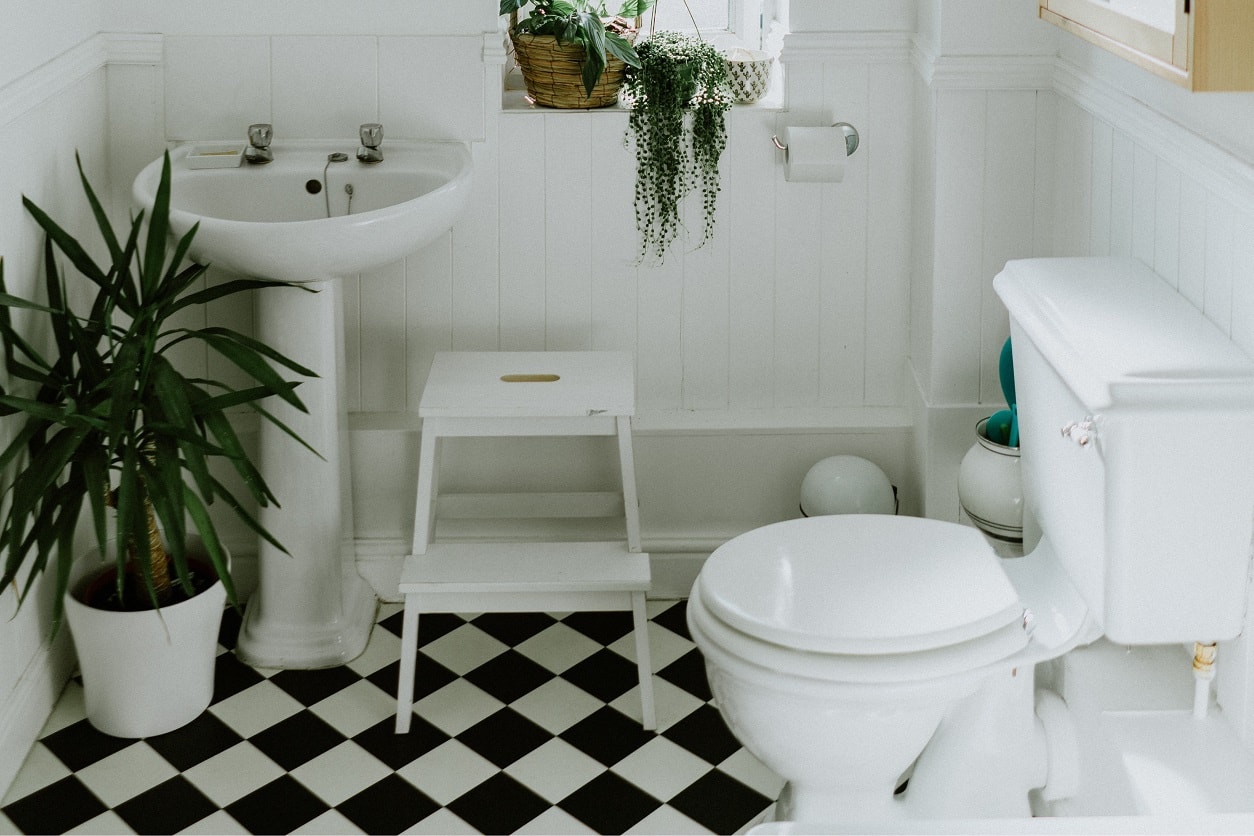Follow these preventive maintenance steps to protect your home from water damage.
1
Prevent toilet failure

- Be patient after you flush and wait for the valve to completely finish refilling the tank and bowl. If an overflow looks imminent, lift off the tank cover and lift the float to shut off water flow to the tank, and then turn off the supply valve.
- Twice a year, inspect a toilet’s components, such as the fill, supply, and flush valves, and the supply line. Make sure you can turn off the supply. If you have older screw type valves that are hard to turn or start leaking, consider replacing them with simpler ball valves that are easy to shut off quickly.
2
Inspect and maintain your water heater
- Inspect your anode rod every two years, or every year once the warranty has expired, to determine if it needs to be replaced.
- Flush water heater tanks every six months to remove sediment by attaching a garden hose to the valve at the base. For safety, first turn off the power and run hot water until it is cool.
- Get an annual inspection from a plumbing professional including the shut-off valve and all piping. Signs of broken valves and loose or wet joints and rust are a sign that more severe damage is coming.
3
Maintain washing machine supply lines
Conduct monthly inspections of the hot and cold washing machine supply lines.
- Look for signs the supply hose may be ready to fail—blisters in the hose, worn tubing, stress cracks, or a loose connection.
- Replace the supply hose with a reinforced steel braided hose if it shows any sign of wear.
- Tighten the connection if it feels loose. The most common site of failure is near the connection where the hose bends.
- Replace supply hoses every five years, even if there is no obvious deterioration or wear. Some signs of deterioration may occur from the inside out and may not be visible until it is too late. When replacing washing machine supply hoses, always choose a reinforced steel braided hose over the traditional un-reinforced rubber hose. These hoses will last longer and are far less likely to result in a catastrophic water loss.
4
Prevent plumbing failure
- Never pour grease down the drain.
- Plant trees away from lateral drain lines to prevent roots from damaging piping.
- If your home’s sewer system is connected to the city’s sewer system—a particular problem for older homes—or if you are located downhill or below street level, contact a plumbing professional to install a backflow prevention assembly into your sewer system.
- Call a professional if you notice signs of a plumbing problem—an increased monthly water bill, banging pipes, rust stains, moisture in the walls or on the floor, and signs of wet soil erosion near the foundation.








20 Comments